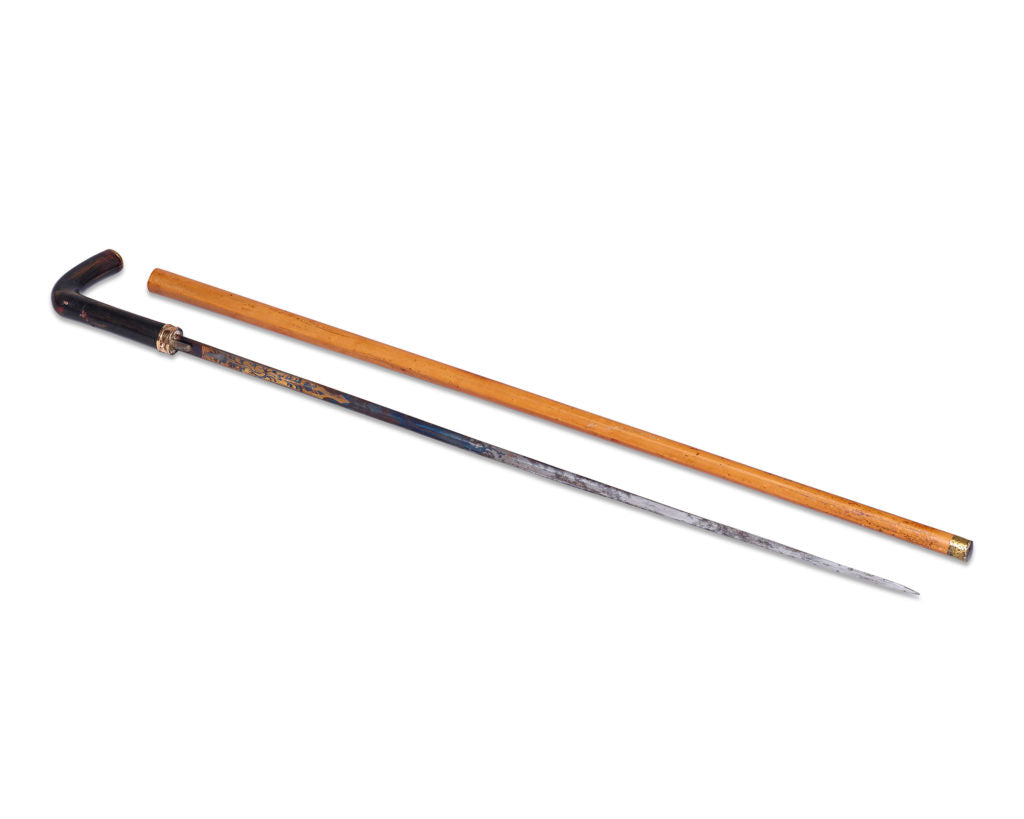
Beginning in the Victorian era, a walking stick was a staple of any wealthy man's wardrobe. As far as self-defense goes, a concealed weapon cane offers the perfect element of surprise. From metal canes with a concealed blade to curved wooden walking sticks with a firearm built right in, these walking stick weapon accessory pieces all have their own unique story.
A Brief History Weapon Canes
During the 18th and 19th centuries, carrying a sword became less socially acceptable. Of course, this did not dissuade those who preferred to be armed and those already trained in swordsmanship. Thus began the fad of hiding one's weapon in plain sight - such as disguising it as part of one's wardrobe or through a wooden cane or walking stick. During this time, a walking cane could be more than a fashion accessory; it could also conceal a deadly weapon. It was also not uncommon for a lady to conceal a weapon in her walking stick or parasol, as it was even less socially acceptable for a woman to be armed.

The Unholy Trinity
An early form of weapon cane products that became widely popular during the French Revolution were walking stick referred to as “Les Diaboliques.” The canes featured inconspicuous-yet-sharp spokes down the sides of the shaft that may be revealed simply by the twist of a handle. Designed before Napoléon’s reign and Haussman’s renovations of Paris, the city's wide boulevards did not exist yet. This allowed Revolutionists to start riots by swiftly jabbing the sides of horses being ridden by police or military. The French government outlawed the canes the first day the design was released. From Les Diaboliques evolved two more weapon canes — “Le Redoutable” and “Le Terrible.” The three designs became known as the “Unholy Trinity” and make for fabulous collector’s items for collectors interested in high quality walking sticks!

One-Shot Pistol Cane
The Gun Cane
Hidden weapon canes were a very prominent form of self-defense in the past, produced by manufacturers in France and England. However, it was not until John F. Thomas of Remington Arms Company perfected the gun cane that this fad became popular in the United States. He received a patent for his rifle cane in 1858, which contained a fully functional percussion-fired single-shot rifle. The design was an overnight success. A characteristic that made the Remington rifle cane unique from previous designs was that its entire firing mechanism and striker were completely encased and hidden inside the upper shaft of the cane. Read on to learn more about some of the rare weapon canes in the M.S. Rau Collection.This weapon cane would have been ideal for quick, split-second defense due to its easily accessible hidden blade. With just a flick of a button, a stiletto dagger reveals itself from the cane’s silver topper. What is interesting about dagger canes produced during this time period is that they were more often than not four-sided blades. Upon being impaled by such a spear while fighting, the resulting wound would be much more difficult to stitch up and heal compared to a single-pointed blade.
A firearm was also a popular self-defense device individuals camouflaged with the guise of a walking stick, such as this stately Malacca wood cane topped with an antler handle. With a concealed trigger and a 7.55 MM breech-loading chamber hidden in the shaft, this hidden weapon cane was sure to go unnoticed as a threat and was one of the many effective fighting techniques used during this time. The lethal aspect of the cane can be exposed simply by twisting the handle and pulling it back.
This weapon cane is ideal for a sneak attack. Perhaps the most discrete, a lethal straight razor is concealed within the shaft of this deceptively understated walking stick. One may reveal their weapon with one swift tug of the knotted handle. Known as a “Bad Boy” cane, razor canes such as this are among the rarest weapon canes.
This unique walking stick may assist its owner in more than one way! It has the ability to launch a rocket flare with the flick of a button, improving vision or as a distress signal. And, of course, it may have fatal repercussions if fired at a close distance as a form of self-defense. It may also be used to blind one’s attacker momentarily so that the cane’s owner may escape a dangerous situation. The wooden shaft and the brass knob handle contain the firing mechanism and a percussion cap.
From the sword cane to the dagger cane, collecting these types of walking sticks has become a way to honor these relics of the past. Browse our weapon cane collection for more one-of-a-kind pieces.
If you’re looking for other unique antiques to add to your collection, visit M.S. Rau for everything from fine art pieces to types of antique vases.













